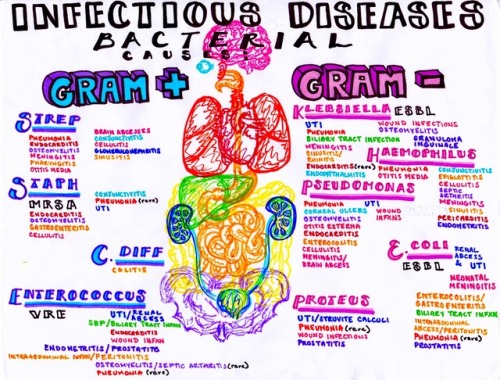Dr Warhol’s Periodic Table Of Microbes


Dr Warhol’s Periodic Table of Microbes
56. Ba. Bacillus
There are more than 300 species of Bacillus, which is a whole whopping load of microbes. Just to wrap your head around that number, if you talked about each one for 1 minute you’d be talking nonstop for 5 hours! Take that TedTalks!
Starting with the basics, these organisms found all over the world, predominantly in soil but microbes go where they please, so they have been found in undersea hydrothermal vents as well as in the stratosphere. They are rod-shaped and form spores.
Just to list a few of the most noteworthy and awesome Bacillus species:
Abyssalis: found more than a mile and a half down at the bottom of the South China Sea.
Anthracis: causative agent of Anthrax, the disease, not the band; death, disease, toxins, yahoo!
Azotofixans: fixes nitrogen.
Canaveralius: StarFleet Academy space bacteria living on the walls of the Kennedy Space Center!
Cereus: you get to play with this in General Microbiology, a pathogen causing foodborne illness.
Decolorationis: for you art history majors, isolated from decaying parts of a mural in the Roman necropolis in Carmona, Spain.
Megaterium: it can consume cave paintings.
Stratosphericus: found in high concentrations orbiting the Earth with satellites around 6 miles up!
Subtilis: the grass bacillus; used for industrial enzyme secretion.
Thuringiensis: absolutely famous for producing the BT toxin used as a natural insecticide.
Bacillus cells are Gram positive rods that measures about 1 micron wide by 4 to 10 microns long, but with more than 300 species you will see a range of sizes.
Everyone needs their own Periodic Table of Microbes from https://www.etsy.com/no-en/shop/WarholScience.
Copyright 2016 Warhol.
More Posts from T-b-a-blr-blog and Others
![[17 Dec 2017] (i Thought I’d Posted But It’s Not Appearing? ):) So Sorry For The Lack Of Original](https://64.media.tumblr.com/f1721a96c8d90aac046d6f8734faf5cd/tumblr_p13ywgKXmD1vusjcpo1_500.jpg)
[17 Dec 2017] (i thought i’d posted but it’s not appearing? ):) so sorry for the lack of original posts all these months! school has been so tough & i’ve just completed my mid-sem assessments & it’s finally my break! can’t wait to unwind and catch up on my sleep ;-;

Infectious bacterial diseases and where to find them

Immunosupressants Drug Mnemonic
Bc everything’s better when I study with Harry Potter references.
I’m reposting it, because I love this chart
Nocardia
Gram+, aerobic, non-spore forming, non- motile, branching filamentous rod.

Partially acid fast
Immunocompromised pts, cancer pts.
DISEASES
Cavitary broncopulmonary Nocardiosis: > N. asteroides, fever, cough, dyspnea, localized or diffuse pneumonia (symptoms very similar to TBC) If spreads hematogenously => multiple brain abscesses.

Cutaneous, subcutaneous Nocardiosis: > N. brasiliensis,cellulitis => subcutaneous draining abscess with granules (mycetoma)





It’s Medical Mnemonics Monday!
Renal Papillary Necrosis is a form of nephropathy characterized by coagulative necrosis of the renal medullary pyramids and papillae.
Causes of Papillary Necrosis can be remembered by the mnemonic “POSTCARDS”.
P yelonephritis
O bstruction of the urogenital tract
S ickle cell disease
T uberculosis
Chronic liver disease,
A nalgesia /A lcohol abuse,
R enal transplant rejection
D iabetes mellitus
S ystemic vasculitis
Check out the list of the previous Medical Mnemonics here.

be patient, good things are coming your way :)

volutin granules are an intracytoplasmic storage form of complexed inorganic polyphosphate, the production of which is used as one of the identifying criteria when attempting to isolate Corynebacterium diphtheriae on Löffler’s medium….look like chines letters…as given below
-
 inboundflight liked this · 6 years ago
inboundflight liked this · 6 years ago -
 andyaru reblogged this · 6 years ago
andyaru reblogged this · 6 years ago -
 andyaru liked this · 6 years ago
andyaru liked this · 6 years ago -
 shedoesknowwhatsheisdoing-blog liked this · 6 years ago
shedoesknowwhatsheisdoing-blog liked this · 6 years ago -
 fernandanajerd reblogged this · 6 years ago
fernandanajerd reblogged this · 6 years ago -
 fernandanajerd liked this · 6 years ago
fernandanajerd liked this · 6 years ago -
 t-b-a-blr-blog reblogged this · 6 years ago
t-b-a-blr-blog reblogged this · 6 years ago -
 t-b-a-blr-blog liked this · 6 years ago
t-b-a-blr-blog liked this · 6 years ago -
 shyfacebarbarian liked this · 7 years ago
shyfacebarbarian liked this · 7 years ago -
 poiluvert liked this · 7 years ago
poiluvert liked this · 7 years ago -
 lactivore liked this · 7 years ago
lactivore liked this · 7 years ago -
 specialk4000 liked this · 7 years ago
specialk4000 liked this · 7 years ago -
 softbenzene liked this · 8 years ago
softbenzene liked this · 8 years ago -
 justicesputnik liked this · 8 years ago
justicesputnik liked this · 8 years ago -
 guavaorb liked this · 8 years ago
guavaorb liked this · 8 years ago -
 fraise-impossible reblogged this · 8 years ago
fraise-impossible reblogged this · 8 years ago -
 greet-the-morning-sun liked this · 8 years ago
greet-the-morning-sun liked this · 8 years ago -
 microgeek reblogged this · 8 years ago
microgeek reblogged this · 8 years ago -
 vaneshca liked this · 8 years ago
vaneshca liked this · 8 years ago -
 mizzotto reblogged this · 8 years ago
mizzotto reblogged this · 8 years ago -
 alexandridis701 liked this · 8 years ago
alexandridis701 liked this · 8 years ago -
 nursey-me liked this · 8 years ago
nursey-me liked this · 8 years ago -
 dlane247 reblogged this · 8 years ago
dlane247 reblogged this · 8 years ago -
 dlane247 liked this · 8 years ago
dlane247 liked this · 8 years ago -
 atoms-through-consciousness liked this · 8 years ago
atoms-through-consciousness liked this · 8 years ago -
 learnhardplayhard-blog reblogged this · 8 years ago
learnhardplayhard-blog reblogged this · 8 years ago -
 blackdowning reblogged this · 8 years ago
blackdowning reblogged this · 8 years ago -
 blackdowning liked this · 8 years ago
blackdowning liked this · 8 years ago -
 biggothmommy reblogged this · 8 years ago
biggothmommy reblogged this · 8 years ago -
 spectramora liked this · 8 years ago
spectramora liked this · 8 years ago -
 merismo liked this · 8 years ago
merismo liked this · 8 years ago -
 itrustmeimhero liked this · 8 years ago
itrustmeimhero liked this · 8 years ago -
 homotology reblogged this · 8 years ago
homotology reblogged this · 8 years ago -
 homotology liked this · 8 years ago
homotology liked this · 8 years ago -
 microminutes reblogged this · 8 years ago
microminutes reblogged this · 8 years ago

